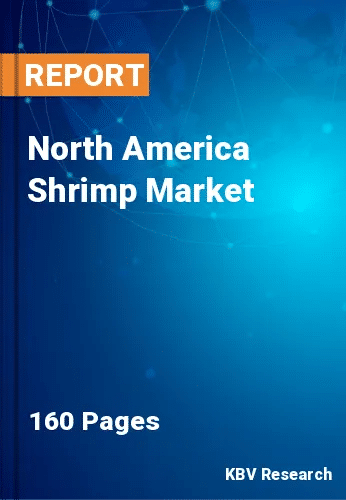
The North America Shrimp Market would witness market growth of 5.8% CAGR during the forecast period (2023-2030). In the year 2019, the North America market's volume surged to 1,146.9 kilo tonnes, showcasing a growth of 4.6% (2019-2022).
The popular and delectable crustacean shrimp has become a staple in the seafood industry, offering many culinary delights. The adoption of shrimp production as a thriving industry has been marked by remarkable growth over the past several decades. Shrimp, a versatile and delicious source of protein, has garnered a significant fan base.
The advancement of shrimp aquaculture techniques has been a game-changer. The industry's shift from predominantly wild-caught shrimp to farmed shrimp has allowed for increased production, control over quality, and reduced environmental impact. Shrimp farming has provided substantial economic opportunities for many countries in export revenues and job creation.
In addition, the growing awareness of sustainability and responsible sourcing has driven the adoption of certification programs such as the Aquaculture Stewardship Council (ASC) and Best Aquaculture Practices (BAP), which ensure environmentally friendly and socially responsible shrimp production practices. Technological advancements in aquaculture have significantly improved shrimp production efficiency, disease management, and feed formulations. Evolving consumer preferences for healthier protein sources and sustainable choices have driven the demand for shrimp in the market.
Canada produced 0.9 million tonnes of fish and seafood, valued at 5.0 billion in 2020. In 2021, per household fish and seafood consumption in Canada reached Can$314. Fish and seafood per household consumption are expected to increase to Can$348.1 in 2026. Moreover, the increasing demand for shrimp in the regional food service industry is driven by consumer preferences for healthier and diverse menu options, a commitment to sustainability, the popularity of global and ethnic cuisine, and the ease of preparation. This trend is likely to continue as consumers' culinary interests evolve and their expectations for quality and sustainability increase. These factors are expected to help expand the market in the North America region.
The US market dominated the North America Shrimp Market by Country in 2022 and would continue to be a dominant market till 2030; thereby, achieving a market value of $17,983.5 million by 2030. The Canada market is exhibiting a CAGR of 8.2% during (2023 - 2030). Additionally, The Mexico market would experience a CAGR of 7.2% during (2023 - 2030).
Based on Source, the market is segmented into Aquaculture, and Wild. Based on Distribution Channel, the market is segmented into B2B, and B2C. Based on Form, the market is segmented into Green/ Head-on, Green/ Head-off, Peeled, Cooked, Breaded, and Others. Based on Species, the market is segmented into L. Vannamei, Trachipenaeus Curvirostris, Pleoticus Muelleri, Pandalus Borealis, P. Monodon, Acetes Japonicus, P. Chinensis, and Others. Based on countries, the market is segmented into U.S., Mexico, Canada, and Rest of North America.
Free Valuable Insights: The Global Shrimp Market is Predict to reach USD 106.7 Billion by 2030, at a CAGR of 6%
The market research report covers the analysis of key stake holders of the market. Key companies profiled in the report include Thai Union Group PCL, Clearwater Seafoods, Avanti Feeds Limited, High Liner Foods, Surapon Foods Public Company Limited, Mazzetta Company, LLC, Aqua Star, Nordic Seafood A/S, The Waterbase Limited and Wild Ocean Direct
By Source (Volume, Kilo Tonnes, USD Million/Billion, 2019-2030)
By Distribution Channel (Volume, Kilo Tonnes, USD Million/Billion, 2019-2030)
By Form (Volume, Kilo Tonnes, USD Million/Billion, 2019-2030)
By Species (Volume, Kilo Tonnes, USD Million/Billion, 2019-2030)
By Country (Volume, Kilo Tonnes, USD Million/Billion, 2019-2030)
Our team of dedicated experts can provide you with attractive expansion opportunities for your business.
